Highly successful In Situ event at Small Arms Building in Mississauga, Oct. 27 to 29, 2016: Great turnout, great sense of organization

A Hanlan Water Project construction site is located just east of the Small Arms Building. Work at the site appears close to completed. Jaan Pill photo
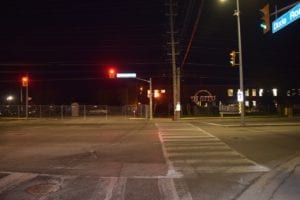
View of Small Arms Building in Mississauga: Corner of Dixie Road and Lakeshore Road East. Jaan Pill photo
I am delighted that I had the opportunity, on the evening of Saturday, Oct. 29, 2016, to attend an In Situ event at the Small Arms Building in Mississauga.
We were impressed with the turnout, the enthusiasm, and the great sense of organization. The event appealed to groups of all ages.
It was clear that every detail had been attended to, at a highly professional level, starting with the parking and continuing with the lighting inside and outside the building, and the music, art installations, and other displays and creative performances.
It was also clear that a great deal of well-coordinated volunteer effort, by individuals of all ages, was involved in the staging of the event.
For many years, I’ve been following the story of the Small Arms Building which was dramatically saved – through the efforts of local residents working in collaboration with City of Mississauga officials – from demolition several years ago. Eventually, rather than being bulldozed, it was designated as a heritage building under the Ontario Heritage Act.
What we observed at In Situ – in particular, the bringing together of so many resources, artists, performers, and such a great audience – on Oct. 29, 2016 has convinced me that the Small Arms Society is off to a great start to its well-planned, collaborative repurposing project on behalf of the Small Arms Building.
I was super impressed with the information that students shared, about the various art displays; the students had signs saying “Ask Me about the Art,” and that’s what you did. It was a great way to learn quickly about each of the displays, that we wished to ask about.
A previous post about the event is entitled:

In Situ, Oct. 29, 2016. Lee-Enfield rifles were manufactured during the Second World War at the Small Arms Ltd. plant west of Etobicoke Creek. Jaan Pill photo
In Situ Multi Arts Festival at the Small Arms Building, Oct. 27 to 29, 2016
Along with art installations, jazz music and a DJ, In Situ also included a special performance by Frog in Hand called Creature, an audience interactive experience through the building. A BBQ and Cash Bar were also set up inside the Small Arms Building at 1352 Lakeshore Road East.
Lee-Enfield rifles and Sten machine guns were manufactured at the Small Arms Ltd. munitions plant

In Situ, Oct. 29, 2016. The display is from the TRCA / Sawmill Sid portable sawmilling project behind the Small Arms Building. The project is repurposing trees destroyed by the emerald ash borer. Jaan Pill photo
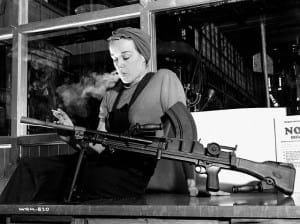
Ronnie the Bren Gun Girl: Veronica Foster. Source: Libraries & Archives of Canada PA – 119766. Veronica Foster, who worked at the John Inglis plant in Toronto during the Second World War, was actually a nonsmoker, her daughter informed me some years ago at a Small Arms Open House. She only smoked for the photo session where this photo and others were taken.
During the Second World War, the building had served as an inspection building for the nearby Small Arms Ltd. munitions plant, which had employed large numbers of workers (a large proportion of whom were young women from across Canada) making Lee-Enfield rifles and other small arms during the Second World War.
According to a Sept. 19, 1991 Toronto Star article, cited at a previous post, the Small Arms Ltd. munitions plant turned out “more than 900,000 Lee-Enfield rifles, 126,000 Sten guns and 1,000 sniper rifles.”
Bren guns were manufactured at the John Inglis plant in Toronto
As noted at another previous post, Bren guns were not manufactured at the Small Arms plant during the war years; Bren guns were, instead, manufactured at the John Inglis munitions plant in what is now Liberty Village in Toronto.
Click here for previous posts about the Small Arms Building >
Click here for previous posts about military history >
A previous post discusses the story of Veronica Foster, who worked at the John Inglis Co. munitions plant in Toronto:
Genocide and the Geographical Imagination (2011)
Spending time at the In Situ event on Oct. 29, 2016 at the Small Arms Building prompted me to think about what I have been reading about warfare and military history in recent years.
It is at just such an event, with the convergence of art, history, and the present moment, that a person’s mind is free to wander and to make connections.
Some years ago I read a book by James A. Tyner entitled: Genocide and the Geographical Imagination: Life and Death in Germany, China, and Cambodia (2011).
The book has enabled me to some understand things in a way that I had not previously been able to understand.
A review [I’ve broken the longer text into shorter paragraphs] by B. Osborne of Queen’s University at Kingston, published by the American Library Association and posted at the Toronto Public Library website, reads:
Tyner (geography, Kent State Univ.) applies a geographic perspective on state building by considering the complex moral calculus behind policies that determine who lives and who dies during efforts to achieve state-sanctioned utopias.
The introductory chapter examines the psychology of killing and state-sanctioned geographic imaginations. The author uses the Holocaust to examine state-sponsored violence and expose ideas of sovereignty and the spatiality of life and death. His analysis of Maoist China questions whether allowing 40 million people to die between 1959 and 1961 was intentional genocide or a by-product of a drive to a utopian worldview.
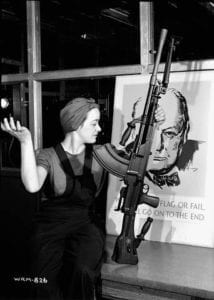
Veronica Foster, a wartime employee of the John Inglis plant in Toronto, was known as Ronnie the Bren Gun Girl. After the war she became a model and big band singer. Source: Libraries & Archives of Canada photo from an Oct. 31, 2016 tweet by Canada’s Military History @CanadasMilHist
Finally, Tyner explores Cambodia’s loss of a third of its 8 million people in the Khmer Rouge’s search for a just and egalitarian society through the total erasure of traditional Cambodia.
Implicit in these case studies is how the moral geography of the modern bureaucratic state values people. The numbers may be different, but societies still encounter state engagement with contraception, euthanasia, capital punishment, political assassination, and other issues that are part of the moral geography of modern states. The argument is provocative, but the author’s well-demonstrated realities of the horrible verities of his three case studies overwhelm his theoretical exercises. Summing Up: Recommended. Upper-division undergraduates and above.
[End of review]
The Colonial Present (2004)
More recently, I have been reading Chapter 8, “Boundless War,” in a book by Derek Gregory entitled: The Colonial Present: Afghanistan, Palestine, and Iraq (2004). I’m part way through the chapter. Had I not been reading a wide range of studies about military history, over the past several years, I would not have found the chapter quite as easy to follow, as has been the case for me now.
Reading the chapter is emotionally and physically a difficult process for me, but I have the sense that it is important for me to read it.
By reading the chapter I can acknowledge in a small way, to my own self, the suffering that the people of Iraq and Syria and continue to endure.
The experience of reading the chapter brings to mind, for me, the fact that each text that a person encounters is an encounter in which a person’s past experience as a reader, and as a person, has a direct bearing on how the text will be read, and what a person will get out of the reading experience.
Reading is like storytelling. We are all experts at storytelling and reading, yet there is perhaps more to storytelling, and to reading, than any expert can explain. Which brings to mind another book: Vital Little Plans: The Short Works of Jane Jacobs (2016). Jacobs argued that experts have a tendency, in particular circumstances, to make terrible decisions.
Derek Gregory
At the University of British Columbia Department of Geography website, Derek Gregory explains [I have broken the longer text into shorter paragraphs] what his research is about:
My research has two interconnected themes. Most generally, I am interested in the spatial modalities of late modern war, where military violence, occupation and peace bleed into one another. My focus for these investigations is the Middle East, specifically Iraq and Israel/Palestine, but I also consider Afghanistan/Pakistan, East Africa and the geography of the global war prison.
My particular concerns are in the production of spaces that make war possible and permissible via practices of locating, inverting and excepting and in the production of imaginative counter-geographies through artwork, drama and literature.
I am also interested in cultural and political geographies of bombing, from Europe bombing its colonial populations in the early twentieth century through Spain, the Second World War, the wars in Korea, Cambodia, Laos and Vietnam, to the Gulf War, Afghanistan / Pakistan and Iraq. In both cases I draw (critically) on ideas from cultural and political theory/philosophy (including Agamben, Butler and Foucault) and from the visual arts and literary studies (including Said and Sebald).
[End of text]
Some years ago, it would not have had an interest in figuring out what the above-noted overview means.
Now, some years later, I have a better understanding of what such a text communicates.
May 1, 2003: End of major combat operations in Iraq
An evocative paragraph from Chapter 8 , “Boundless War,” in the above-mentioned 2004 study by Derek Gregory, reads [again, I’ve broken the longer text into shorter paragraphs, of ease of online reading]:
On May 1, [2003] when he announced the end of major combat operations in Iraq, [George W.] Bush told his American audience that “When Iraqi civilians looked into the faces of our servicemen and women, they saw strength and kindness and good will.”
No doubt many of them were men and women who displayed all these qualities. But how could the Iraqi people not also have seen in their faces a regime that had bombed and starved their families and friends for 12 years? An army that had fought its way into their cities with terror at its head and death in its wake? An occupying force that demanded complete compliance with its will?
“We are the oldest civilization, but we are presented to the world as terrorists,” a primary school teacher in Baghdad told one human rights worker. “Only people who fight with small guns are called terrorists. Bush, who bombs us with cluster bombs and strangles us with the embargo, is a ‘civilized man.’ ”
You might quibble over the details, but you can hardly miss her point. “Somehow when the bombs start dropping or you hear machine-guns at the end of your street,” Salam Pax wrote in his weblog, “you don’t think about your imminent ‘liberation’ any more.” [100]
[The ‘100’ refers to an endnote.]
[End of excerpt]
Gregory’s account brings to mind How Everything Became War and the Military Became Everything: Tales from the Pentagon (2016) by Rosa Brooks.

In Situ, Oct. 29, 2016. The image at the centre of the photo makes evocative, engaging use of perspective cues to represent a hallway at the Small Arms Building. The paintings on display at In Situ were of high quality; I look forward to seeing additional displays of such paintings. Jaan Pill photo
Jane Jacobs and the imaginative geographies of the Spadina Expressway
The history of the Small Arms Ltd. munitions plant is part of the Second World War history of Canada. A link to a 3-minute video about the plant is available at a previous post entitled:
Also of relevance is a previous post entitled:
The “3P” Strategy: Proactive, Persistent, and Positive
The postwar era is closely associated with the “imaginative geographies” associated with the saga of the Spadina Expressway in Toronto. The postwar era across the Greater Toronto Area was to a significant degree shaped by the automobile, and its requirements.
Of the Spadina Expressway, we can say that the urban fabric – and the social fabric of local neighbourhoods in Toronto – was also shaped (and preserved) by local citizens who stood up against what I would call “structural violence.”
The structure violence that I refer to was initiated by “expert” planners and bureaucrats during the postwar era, directed at local, city neighbourhoods. Among the people who led the opposition, in the 1960s in Toronto and elsewhere, to the trends demonstrated by the Spadina Expressway project were Jane Jacobs and Marshall McLuhan.
The opening paragraph, of a Nov. 1, 1969 article – entitled: “A City Getting Hooked on the Expressway Drug” – by Jane Jacobs in The Globe and Mail, reprinted in Vital Little Plans: The Short Works of Jane Jacobs (2016), reads:
When my family and I settled in Toronto about a year and a half ago, we soon learned the flat we had rented was perched on the putative edge of the Spadina Expressway, variously described to us as elevated, no, depressed; six lanes wide, no, eight; with a subway underneath, no, without; to be built soon, no, not for a long time. Whatever it was, it was not imaginary. Up at Highway 401 we could see what Marshall McLuhan calls the launching pad, a big, confident interchange poised for imminent attack upon a wide swath of raw earth and for the subsequent invasion of still unviolated ravine and pleasant communities to the south. In the mind’s eye, one could see the great trees and jolly Edwardian porches falling before the onslaught.
[A pull-out sidebar to the opening paragraph reads:]
In the mind’s eye, one could see the great trees and jolly Edwardian porches falling before the onslaught.
[End of excerpt]
Additional links related to Small Arms Building
Previous posts about the Small Arms Building or topics connected with it can be accessed at several links:
Lakeview Waterfront Connection Project
Lakeview Ratepayers Association
Toronto and Region Conservation (TRCA)
Credit Valley Conservation (CVC)
Click on the photos to enlarge them; click again to enlarge them further
Topics of related interest (that is, topics associated with military history including worldviews, mindsets, tactics, strategies, and logistics associated with the management of organized violence) are discussed at a post entitled:
Empathy is great provided that we use it wisely
Updates
A March 29, 2017 City of Mississauga news release is entitled: “City of Mississauga Wins Municipality of the Year Award.”
Also of interest: Food Will Win the War: The Politics, Culture, and Science of Food on Canada’s Home Front (2014)
A Feb. 7, 2019 Unwritten Histories article is entitled: “Guest Post: Rosie the Riveter and Ronnie the Bren Gun Girl: Exploring the Historical Roots of a Gendered Visual Symbol.”


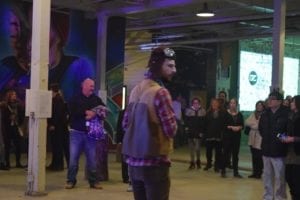
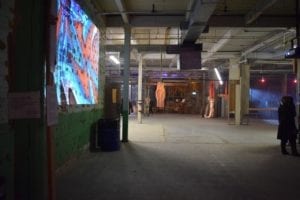
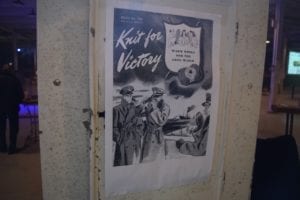
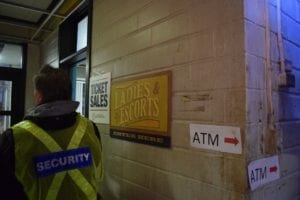
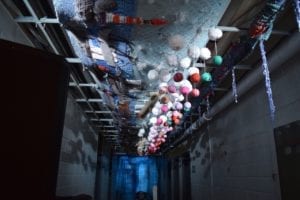
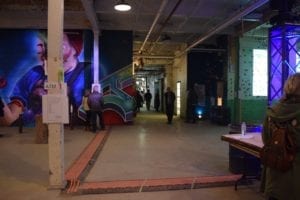


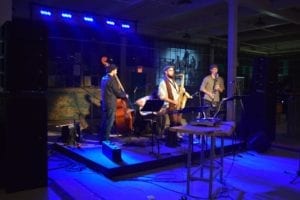
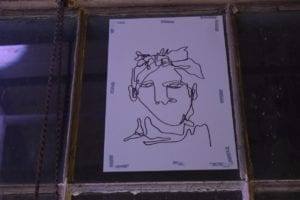

Leave a Reply
Want to join the discussion?Feel free to contribute!